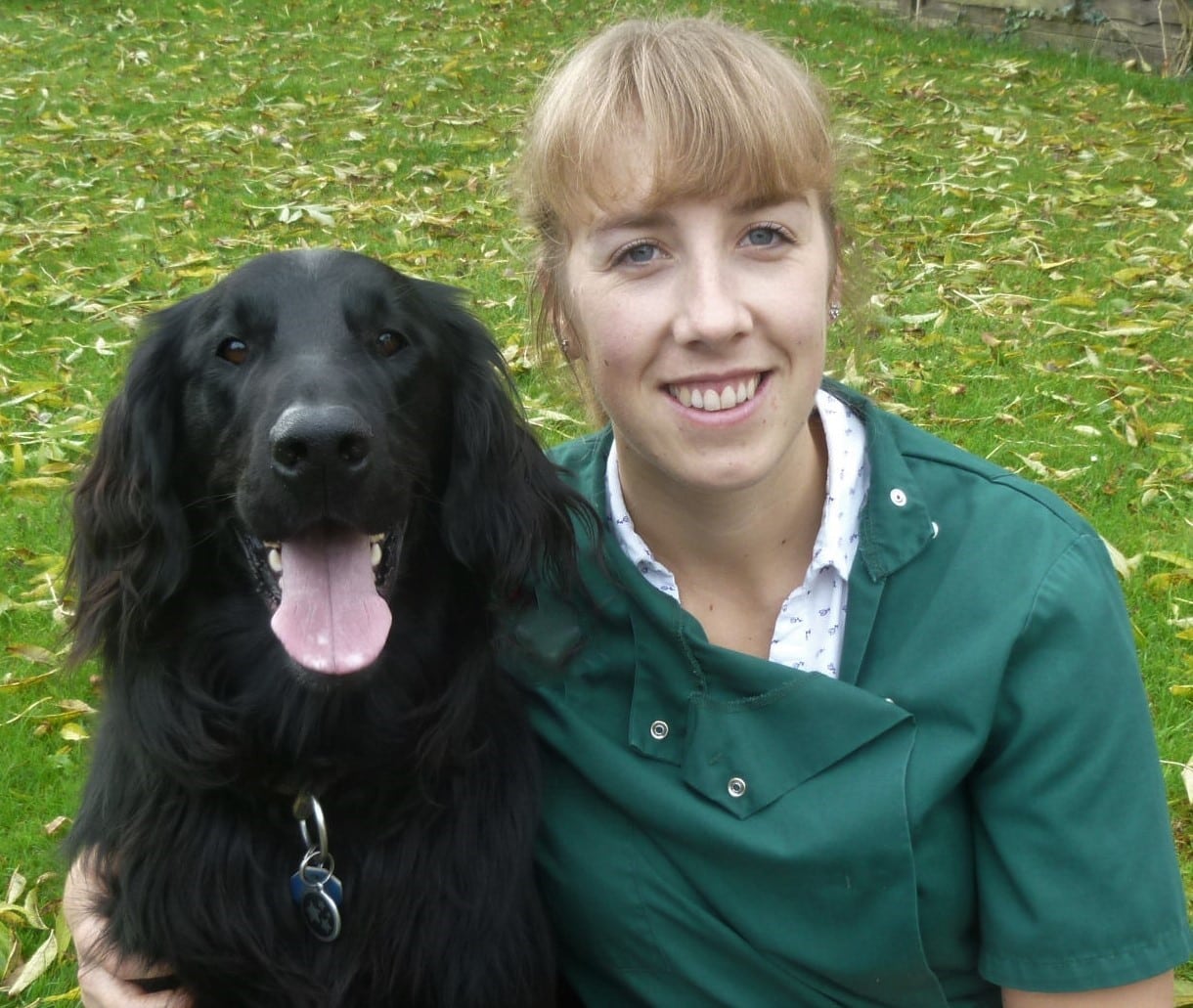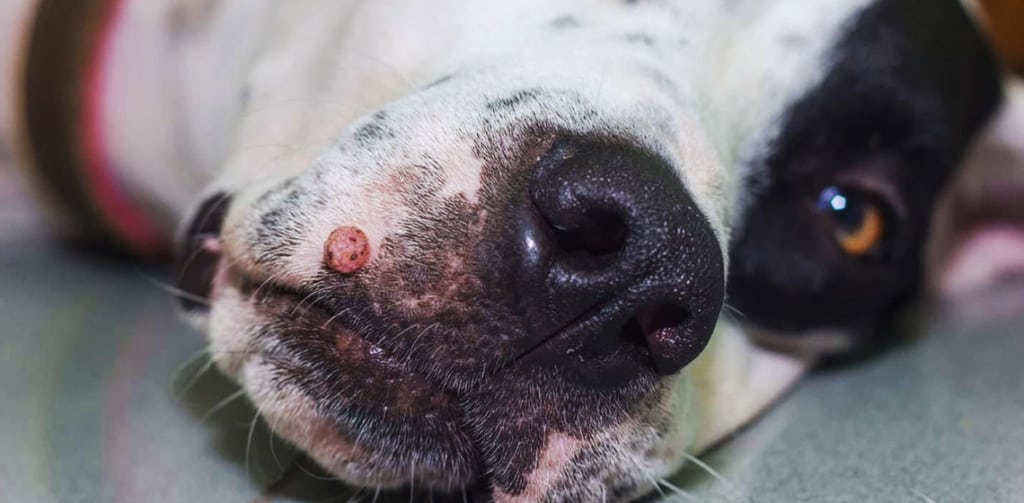Oral papillomatosis is a condition that usually affects young animals causing warty-looking growths around the mouth. Whilst unsightly, these warts are usually nothing to worry about, but we will explore the cause and their treatment in more detail in this article.
Severity:
Usually mild, rare cases can be more serious
Table of Contents
Key points
- Oral papillomas are benign warts that can grow around the mouth of young dogs
- They are caused by a virus spread by other infected dogs
- Treatment is not usually required
- These warts usually regress and disappear by themselves over time
- They are not contagious to other animals or humans
Common in
Young dogs of any breed, as well as animals that are immunocompromised
Symptoms & types
Oral papillomas usually appear as grey or flesh-colored lumps around your dog’s lips or gums. These lumps are usually small and cauliflower-like in appearance, looking a bit irregular. Your dog may only have one single lump, or they could have multiple. As these masses affect the mucous membranes they may also be seen in other locations around your dog’s mouth such as the roof of the mouth, tongue, or back of the throat.
In some rare cases, these papillomas can be severe and extensive. When this occurs dog might have difficulty chewing and swallowing, or even breathing.
Most of the time warts are nothing to worry about. Warty growths around the mouth of a young dog are usually caused by an oral papillomavirus, and the lumps regress by themselves again.
Understanding the diagnostics
Diagnosis of an oral papilloma can usually be made from an examination by a veterinarian. That combined with the location of the wart and the dog’s age usually gives a reasonably reliable answer. However, in some cases, the appearance of the growth may not look like a classic papilloma and your vet may need to run some additional tests to be sure.
Removal of the lump under anesthetic can be performed, and the growth can be sent away for analysis (termed an ‘excisional biopsy’). This can give a more certain diagnosis in any cases that aren’t clear cut. However, bear in mind that most oral papillomas will shrink and disappear by themselves without the need for surgical removal.
Learning about the causes
The underlying cause of oral papillomatosis is papillomaviruses. There are a variety of different viruses that can affect dogs, but these are all canine-specific and are not contagious to other species (including humans).
The virus is infectious between dogs, however, and can be spread by direct dog-to-dog contact or through encountering the virus in the environment e.g. shared water bowls. The virus usually enters through small cuts or tiny areas of damage in the dog’s mucous membranes. After a few weeks, the growths start to become apparent, usually as warts on your dog’s lip or gums, but sometimes they might be seen on the skin too.
Oral papillomas are contagious and can spread by either direct contact with an infected dog or through touching items that an infected dog has touched with their mouths (like toys and food bowls).
Best treatment options
The underlying cause of oral papillomatosis is papillomaviruses. There are a variety of different viruses that can affect dogs, but these are all canine-specific and are not contagious to other species (including humans).
The virus is infectious between dogs, however, and can be spread by direct dog-to-dog contact or through encountering the virus in the environment e.g. shared water bowls. The virus usually enters through small cuts or tiny areas of damage in the dog’s mucous membranes. After a few weeks, the growths start to become apparent, usually as warts on your dog’s lip or gums, but sometimes they might be seen on the skin too.
In severe cases, the following treatment options might be considered:
- Azithromycin, a type of antibiotic
- Interferon, an anti-viral medication
- Surgery to remove problematic lumps (or cryotherapy – freezing warts)
- A canine oral papillomavirus vaccine developed in the US shows some good effects in certain cases.
- Immunomodulating drugs (e.g levamisole and thiabendazole) may be helpful, but more research and evidence are needed.
As oral papillomavirus is contagious between dogs you should avoid your dog mixing with other young animals, where possible, to stop the spread whilst you wait for the lumps to regress. Keep a close eye on your dog’s mouth, in case there are any less obvious warts on the inside of it that are causing problems.
You can support your dog by making sure he is on a good-quality complete diet to ensure his immune system is getting all the nutrients it needs.
Conclusion
Oral papillomas are seen most commonly in younger dogs, appearing as fleshy warts. They are caused by a virus that is contagious between dogs. Most warts will regress and disappear again by themselves without the need for any treatment. However, you should always contact us for an examination if you have any concerns about your pet.
FAQ
Most of the time warts are nothing to worry about. Warty growths around the mouth of a young dog are usually caused by an oral papillomavirus, and the lumps regress by themselves again. A veterinarian will be able to advise you further so it is best to get your dog checked out if you are concerned. Older dogs may have other types of warty lump — these should be checked by a veterinarian.
If your dog has been diagnosed with oral papillomas, then these should regress and get better by themselves. You can support your dog by making sure he is on a good-quality complete diet to ensure his immune system is getting all the nutrients it needs. Other types of wart generally don’t need removing unless they are getting in your dog’s way. There are no safe home remedies for warts.
Oral papillomas are contagious and can spread by either direct contact with an infected dog or through touching items that an infected dog has touched with their mouths (like toys and food bowls). Dog warts are not contagious to people, however, and older dogs with a more established immune system are less likely to contract them.
Elderly dogs can suffer from warts as their immune system deteriorates or becomes compromised. Dogs with health conditions like certain types of cancer, or those that are on immunosuppressive medications, are more susceptible. Older dogs can also develop growths elsewhere on their body that look like warts. Though many of these other types of growth are benign, it’s best to get them checked by a veterinarian to confirm.

Rebecca is a companion animal vet who has always had a passion for writing and client communication. Since her graduation from the Royal Veterinary college in 2009, she has gained a wealth of experience in first opinion small animal practice, in both clinical and managerial roles. She currently works in the South West and deals with a variety of routine and emergency appointments, but particularly enjoys medicine cases. Outside of work and writing, she enjoys spending time with her family, including her bouncy flat-coated retriever George!








